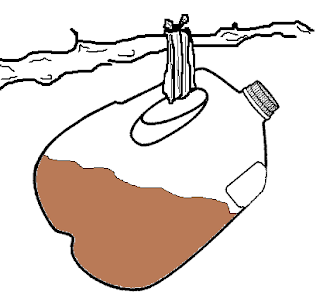
 7
7





 15
15




 6
6




Joseph Lofthouse wrote:You might do things to disrupt the life cycle of the insects, such as keeping poultry or pigs under the trees, or spraying clay on the apples, or gathering fallen apples and disposing of them away from the tree.
 14
14




In modern times the only right way forward is to come back to nature.
 13
13





With appropriate microbes, minerals and organic matter, there is no need for pesticides or herbicides.

 11
11




Ask me about food.
How Permies.com Works (lots of useful links)

 5
5




 3
3




 4
4




With blessings, always
 1
1
















Julia Winter wrote:Here is a trap for codling moths, that could save at least some of your apples from worms:

Using a cleaned out 1 gallon milk jug, cut a hole about the size of a small egg just below the milk jugs shoulder. This can easily be done if you first put hot water in the jug and shake it around until the sides get warm. Empty out water and cut hole with a sharp knife.
Recipe: 1 cup cider vinegar
1/3 cup dark molasses
1/2 teaspoon ammonia
Add enough water to make 1 1/2 quarts liquid
Mix together and pour into milk jug using a funnel. Make sure to replace the cap on the milk jug.
When apple trees are just about done blooming tie the jug on a sturdy branch with a strip of cloth. Hang the jug with the hole facing slightly down so the rain can't get in but also so the mixture can't spill out.
As the season progresses, you'll notice the mixture evaporating, I just grab my lawn hose and add more water to the jug.
Keep jugs in the tree until harvest is over. Discard the jugs, but first...be amazed at how many moths are in the mixture...pretty gross!
Place 2-4 jugs in different locations for an average sized tree.
 1
1




Faye Streiff wrote:
Apples were smaller this year due to too many on the trees, and also we skipped 3 years without putting enough minerals out. Still tasted amazingly good.
JayGee
 1
1





|
We don't have time for this. We've gotta save the moon! Or check this out:
3D Plans - Solar Food Dehydrator with Rocket Boost - Pre-Order
https://permies.com/wiki/193722/Plans-Solar-Food-Dehydrator-Rocket
|






